Residents of Copenhagen, Denmark have watched their city transform in the last five decades to become one of the greenest in the world.
With plans to become carbon neutral by 2025, biking infrastructure all over the city and an annual average of 0.0 exposure to indoor air pollution, which is low compared to other EU countries such as Hungary and Lithuania, according to the European Environment Agency, the work community and government leaders have put in is visible.
An aspect of the work that gets overlooked, however, is the actions of the everyday people living in Copenhagen.
“Sustainable living has become an everyday thing for me,” said Sebastian Brehmer, a student and Copenhagener. “I don’t really have to think about it because it is natural for me to sort my trash and ride my bike.”
Why It’s Newsworthy: With climate change becoming an increasingly urgent issue, Copenhagen continues to be a leading city in the change for a greener world. Inspiration can be taken from Copenhagen and applied to everyday lives in Athens, Georgia.With government administrations and committees working with residents and giving them accessible resources, Copenhageners are able to contribute to the green city through political action, such as informed voting, as well as smaller, individual choices.
Everyday choices include biking, reusable bags and trash sorting, but there are other long-term choices that city residents make. Shared electrical/heating systems throughout buildings reduce individual carbon footprints, and rental services allow cars to be picked up and returned to reserved spots throughout the city to reduce the amount of cars.
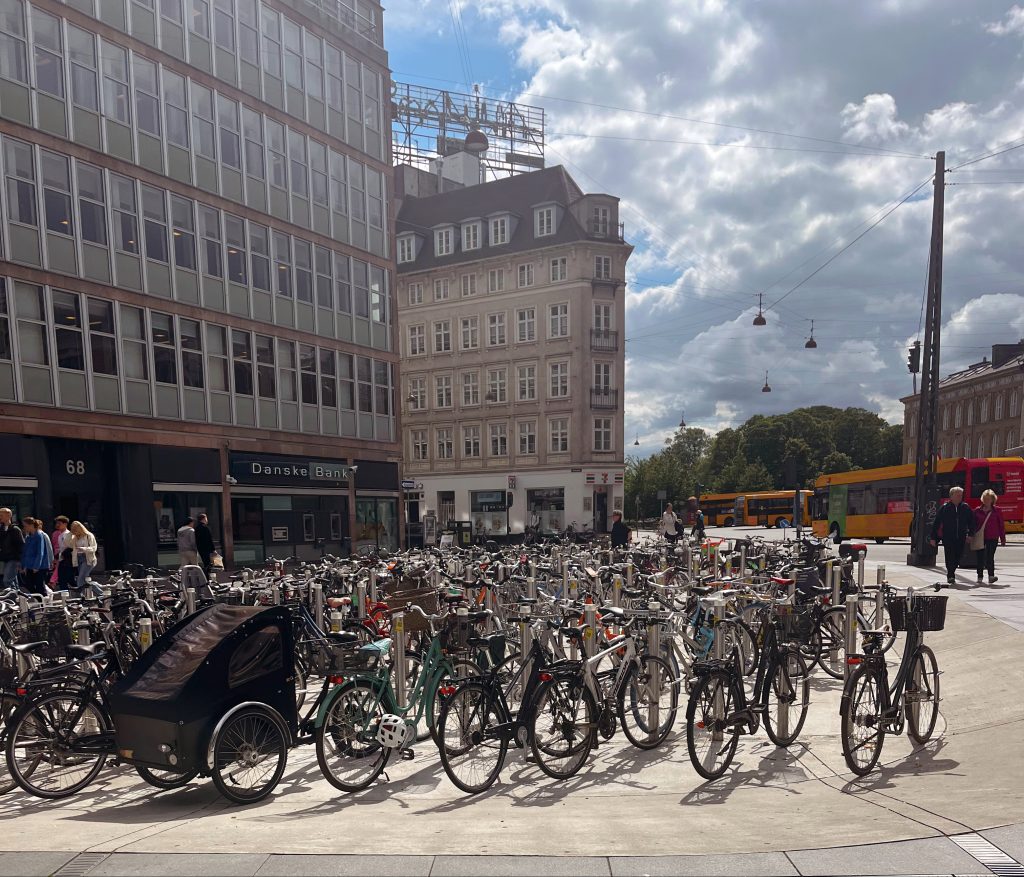
As one of the most bicycle-friendly cities, residents will often opt to bike to get around rather than drive. To incentivize biking or green alternatives, parking in Copenhagen is pricey, with free parking only for sustainable vehicles.
Residents and the Government
With a new policy reducing speed limits in Copenhagen by 10 kilometers, work is done every day to move toward a greener city.
Astrid Aller, a representative of the Green Left Party and member of the Technical and Environmental Committee, works with city planning, specifically traffic, and reflects on how she sees people interacting with government changes.
“Generally, people want to partake in this; they are really positive about taking green responsibilities, so I think it is a big part of the identity of Copenhageners,” Aller said.
After the change in speed limit (which will reduce CO2 emissions by 14.5k tons, approximately 16 million pounds of coal burned, according to Aller), Aller said she only received about five negative emails with the rest asking for a stronger approach or more change. This overwhelmingly positive response reflects the attitude that most residents have as well as how they take matters into their own hands.
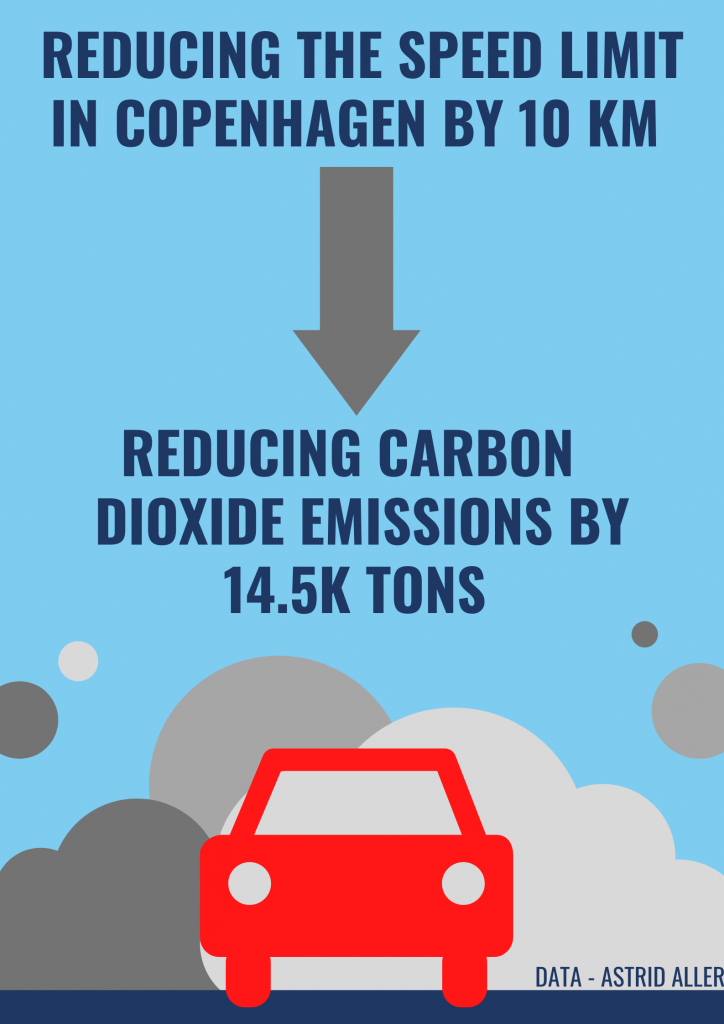
“Personally, I feel like it’s really great that the city of Copenhagen puts so much energy and emphasis on green projects,” Brehmer said. “There are different initiatives such as waste saving and green energy that help citizens engage in the green cause.”
In the 1980s, Denmark began to connect citizens with their governments with citizens’ assemblies. These randomly selected groups meet anywhere from a few days to a few months to discuss problems and come up with solutions that they present to the government.
“You can see that there are some issues in Copenhagen that are pulling people apart … those discussions [citizen assemblies] can help the problems a lot,” Aller said.
Citizens and Non-profit Organizations
While residents work alongside the government to create a greener Copenhagen, State of Green, a non-profit, public-private partnership, provides 600+ solutions and inspiration for people, communities and countries.
“You could say our goal is not really measurable, it is to inspire other countries. That could be political with policy tools or it could be tangible technologies,” said Magnus Mernild, head of press and communications at State of Green.
Mernild cited the positive feedback he receives on the accomplishments of State of Green, once again reflecting the overall attitude of Copenhageners and their interest in sustainability, the environment and continuing the current trend.
“State of Green is one of those organizations that I admire as they keep me up to date with large-scale projects and policies while also having information on how to make individual changes that I can apply on a day-to-day basis,” Brehmer said.
Everyone in Copenhagen plays a part in the environment, the locals, the government and the visitors. This tourist guide provided by the municipality outlines a sustainable visit with plenty of activities and recommendations.
With enough people caring, change can be made and impactful. The U.S. has the second-highest CO2 emissions. To start with a few small changes, whether it be sustainable ride-share services or increased shared-electrical and heating systems, inspiration can be taken from leading cities like Copenhagen.
“If we are to make a difference we have to engage internationally, we have to get our solutions across borders,” Mernild said.
Eva Ponos is a sophomore intended Grady College major and an international affairs major.


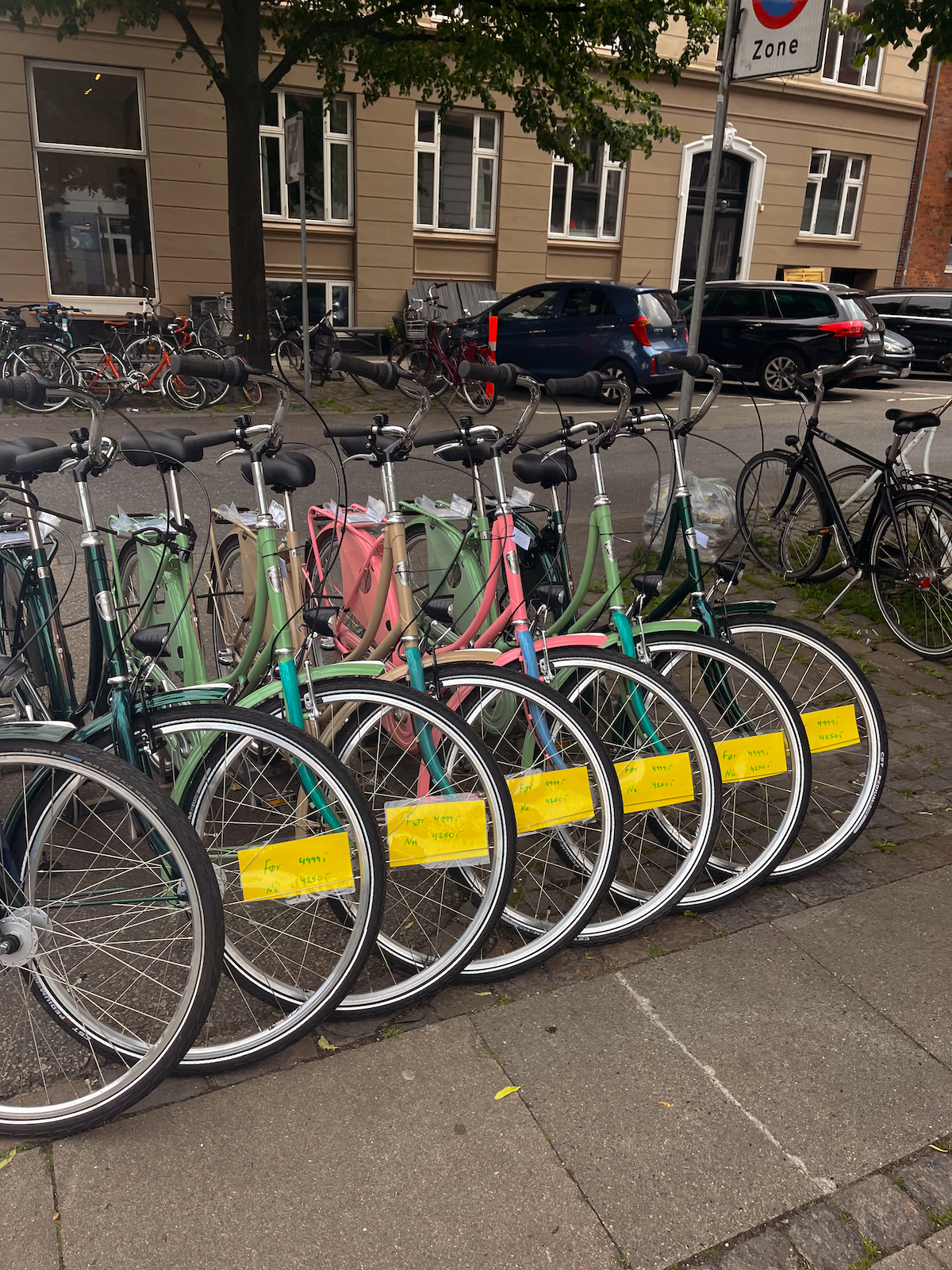
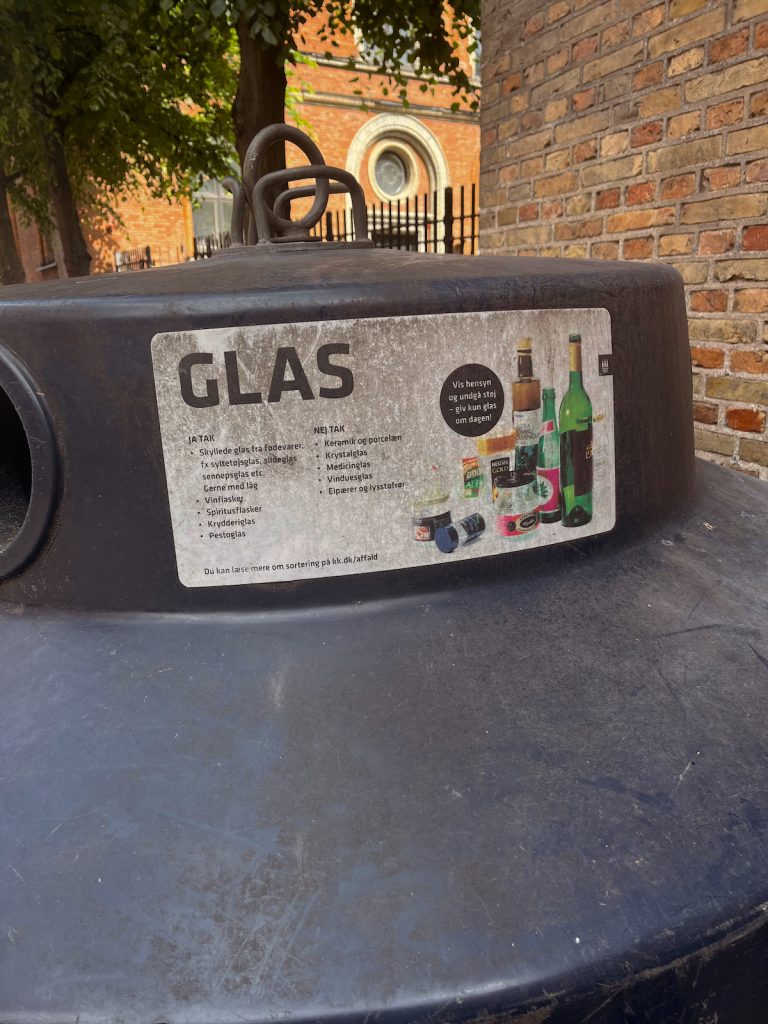
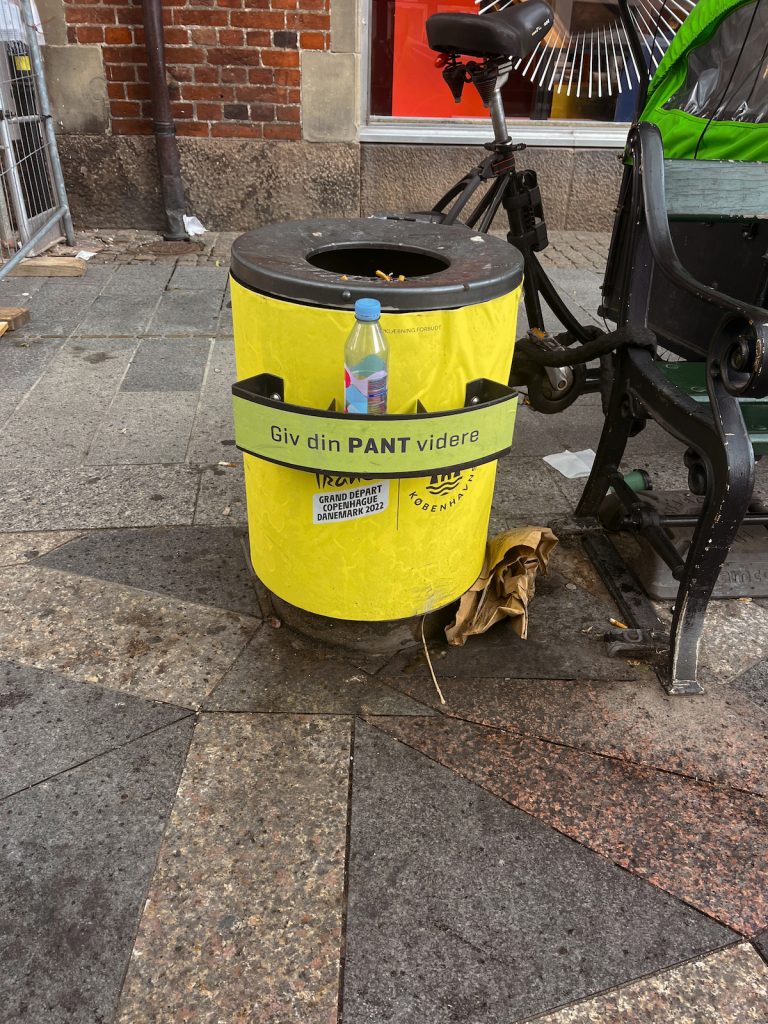
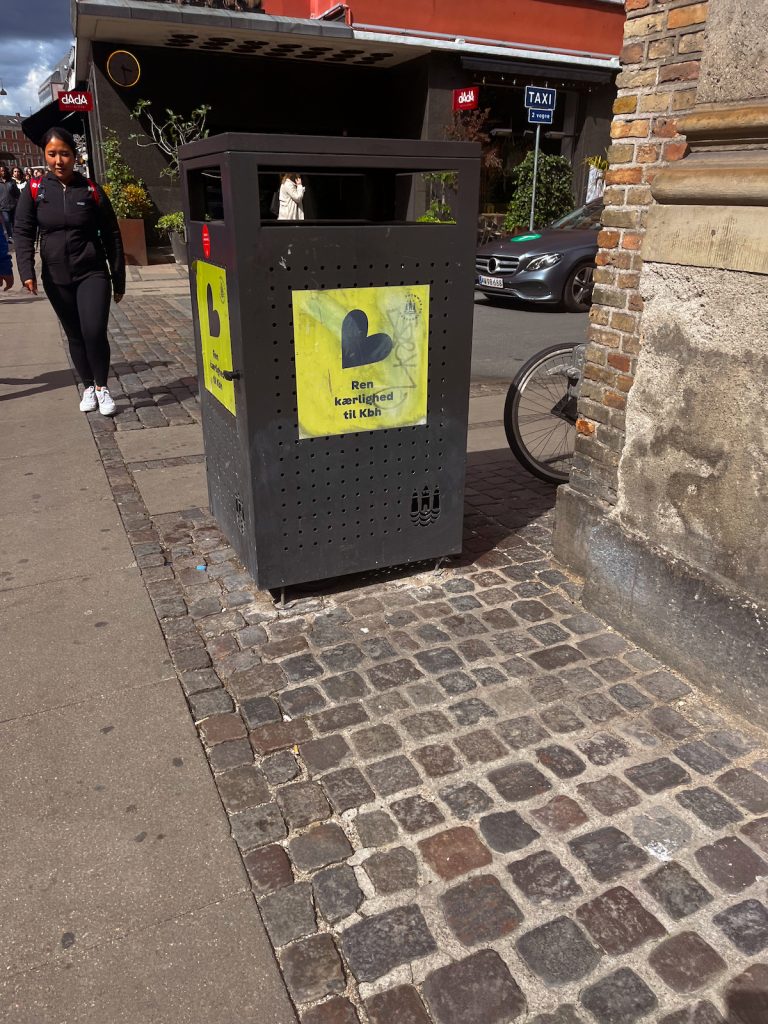




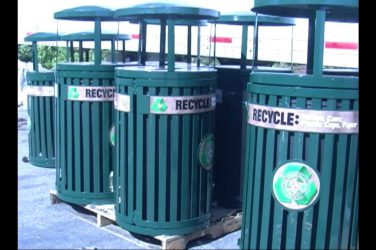


Show Comments (0)